Belgium
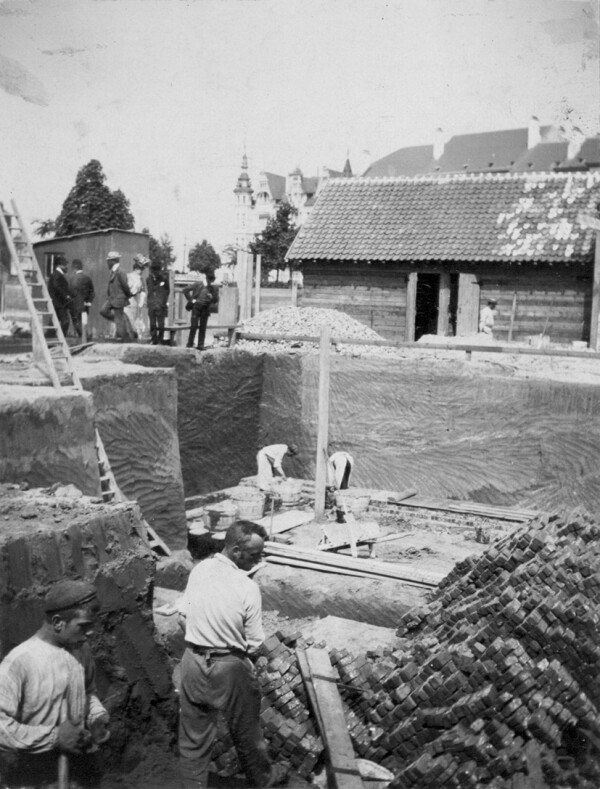
Gustav Klimt on the site of the Palais Stoclet in Brussels, 05/09/1906, MAK - Museum für angewandte Kunst, Archiv der Wiener Werkstätte
© MAK
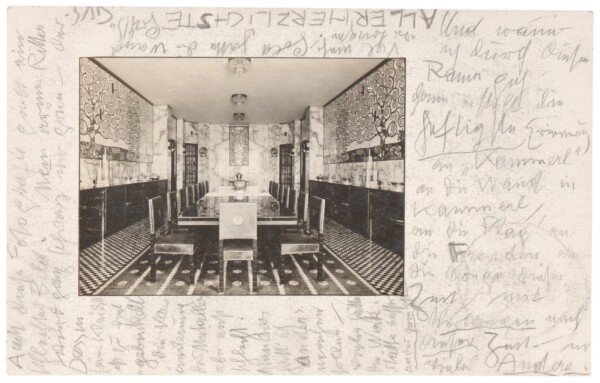
Gustav Klimt: Picture postcard from Gustav Klimt in Brussels to Emilie Flöge in Vienna, 05/18/1914, Österreichische Nationalbibliothek, Sammlung von Handschriften und alten Drucken
© Department of Manuscripts and Rare Books, Austrian National Library
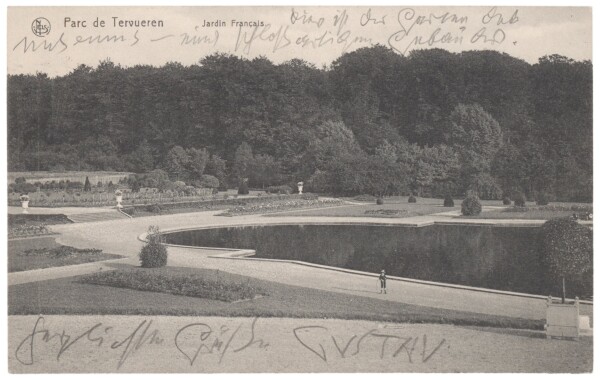
Gustav Klimt: Picture postcard from Gustav Klimt in Brussels to Emilie Flöge in Vienna, 05/16/1914, Österreichische Nationalbibliothek, Sammlung von Handschriften und alten Drucken
© Department of Manuscripts and Rare Books, Austrian National Library
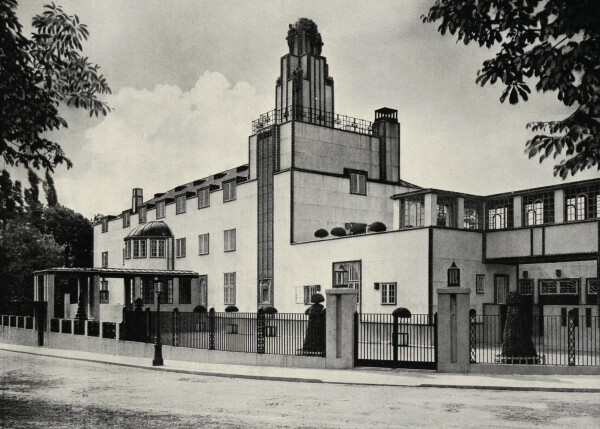
The Palais Stoclet designed by Josef Hoffmann, around 1914, in: Moderne Bauformen. Monatshefte für Architektur und Raumkunst, 13. Jg. (1914).
© Heidelberg University Library
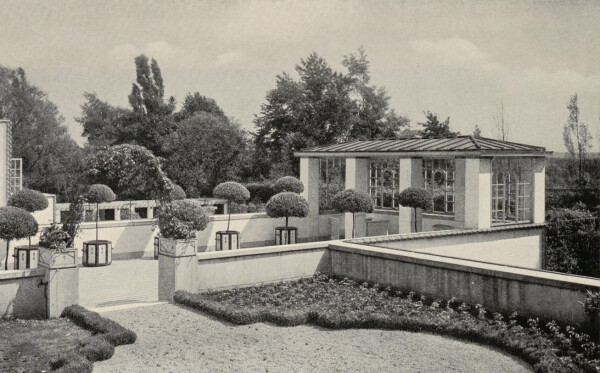
Garden of the Palais Stoclet, around 1914, in: Moderne Bauformen. Monatshefte für Architektur und Raumkunst, 13. Jg. (1914).
© Heidelberg University Library
Following a sojourn in London, Gustav Klimt visited the Belgian capital together with Carl Otto Czeschka and Fritz Waerndorfer in May 1906 in order to witness the progress in the construction of Stoclet Palace. In May 1914, he came to Brussels again and spent several days with the Stoclets.
First Sojourn in Belgium in 1906
After having spent several days in London on the occasion of the “Imperial Royal Austrian Exhibition,” Klimt returned to Vienna in early May 1906. On their way back, he and his travel companions, including Carl Otto Czeschka and Fritz Waerndorfer, made a short stop in Brussels from 8 to 9 May. This stop is documented in two photographs (MAK, Vienna). Together with the Stoclets, they visited the construction site of the palace on Avenue de Tervueren. The artists left on the evening of 9 May and returned to Vienna via Berlin and Dresden.
Visiting the Stoclets (1914)
Klimt came to Brussels for the second time in May 1914. This visit is documented in the regular correspondence between Emilie Flöge and Gustav Klimt. Apart from visiting Stoclet Palace, which had by now been completed, the purpose of the trip was to create several drawings. In his messages to Emilie Flöge, Gustav Klimt does not elaborate on the use for which these drawings were intended.
Klimt left Vienna on Wednesday, 13 May 1914, and traveled by train via Passau, Nuremberg and Aachen to Brussels. According to his reports, he shared his compartment with the graphic artist Sigmund Rosenbaum, who specialized in prints, and the German composer Siegfried Wagner for parts of the journey. On the day of his arrival, Gustav Klimt complained to Emilie Flöge about the continuing spell of bad weather and the fact that his hosts, the Stoclets, were still on their way back from Spain. Klimt expected them to arrive in Brussels on Friday evening at the earliest:
“Ditto bad weather in Brussels – and here comes the best part: The Stoclets aren’t even in Brussels. They are coming from Spain via Paris. Friday night, if all goes to plan! An earlier letter wouldn’t have helped either.”
He spent part of Friday with Adolphe Stoclet’s children and his mother-in-law. He also went sightseeing in the city and paid a first visit to the Stoclets’ city palace, by now completed, on Avenue de Trevueren, about which he wrote to Emilie Flöge: “Stoclet House is very handsome – the surrounding area is rather shabby – the garden is quite sizable and beautiful.” The next day Gustav Klimt went to Trevueren alone and visited the Musée du Congo. Compared to the Austrian court museums, the museum’s interior decorations and its exhibits did not strike him as very impressive – with the exception of the African sculptures, which he described to Emilie Flöge as “stunning and magnificent.”
On Sunday, 17 May 1914, Gustav Klimt, Adolphe and Suzanne Stoclet as well as Josef Hoffmann, the Primavesis and Anton Hanak, who had come from Cologne together, finally met at Stoclet Palace. Klimt reported to Emilie Flöge: “Stoclet House is really very, very beautiful. The photographs do not do it justice.” For the first time Klimt was also able to see his mosaic frieze in its final execution. It seems that Klimt was not entirely satisfied with his design, as he wrote to Emilie Flöge that he thought the wall could have taken more gold and that the Wiener Werkstätte or he himself should have done things differently in the execution of certain details.
Over the next few days, Gustav Klimt wrote to Emilie Flöge of his cumbersome efforts to create several drawings, some new acquaintances he had made in the Stoclet household, the public excitement surrounding the arrival of the King of Denmark in the Belgian capital and his trip to southeastern Belgium. At the same time he repeatedly expressed his homesickness: “I can’t wait to get home now – everything being foreign in the house and on the streets, it does become tedious – after a while.” Klimt presumably returned to Vienna in late May 1914.
Literature and sources
- Agnes Husslein-Arco, Alfred Weidinger (Hg.): Gustav Klimt – Josef Hoffmann. Pioniere der Moderne, Ausst.-Kat., Lower Belvedere (Vienna) - Upper Belvedere (Vienna), 25.10.2011–04.03.2012, Munich 2011, S. 202-251.
- Tobias G. Natter, Franz Smola, Peter Weinhäupl (Hg.): Klimt persönlich. Bilder – Briefe – Einblicke, Ausst.-Kat., Leopold Museum (Vienna), 24.02.2012–27.08.2012, Vienna 2012.
- Sandra Tretter, Peter Weinhäupl (Hg.): Gustav Klimt. Sommerfrische am Attersee 1900-1916, Vienna 2015.
- Sandra Tretter, Peter Weinhäupl (Hg.): Chiffre: Sehnsucht – 25. Gustav Klimts Korrespondenz an Maria Ucicka 1899–1916, Vienna 2014.
- Sandra Tretter, Peter Weinhäupl (Hg.): Gustav Klimt. Florale Welten, Vienna 2019, S. 110-114.
- Alexandra Matzner: Floras Welt. Inszenierte Natur in Kunst und Theorie der Jahrhundertwende, in: Sandra Tretter, Peter Weinhäupl (Hg.): Gustav Klimt. Florale Welten, Vienna 2019, S. 110-114.
- Alfred Weidinger (Hg.): Gustav Klimt, Munich - Berlin - London - New York 2007.
- Tobias G. Natter (Hg.): Gustav Klimt. Sämtliche Gemälde, Vienna 2012.

